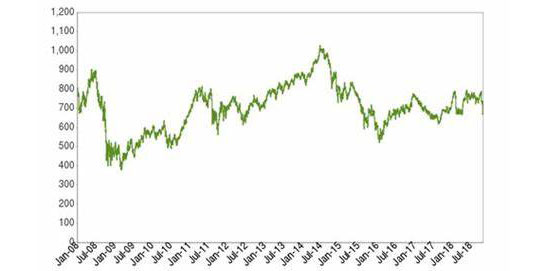Oct 07, 2023 By Triston Martin

Non-perpetual preferred stock matures on a fixed date, but the perpetual preferred stock does not. In other words, depending on the startup's survival, the perpetual preferred stock might pay dividends perpetually. However, if the issue's perpetualness concerns you, continuous preferred stock is not a permanent choice. The firm may still purchase back the perpetual common shares, which is known as a "call" feature. Because of changes in interest rates or tax rules, the founders may seek to repurchase their shares. These repurchase features, however, must be stated in the prospectus for the shares. Finally, since the perpetual preferred stock is a sort of preferred stock rather than ordinary stock, stockholders do not enjoy voting rights or other corporate governance choices.
Perpetual Preferred Stock: Definition and Examples
Perpetual Preferred Stock, as the name suggests, has no fixed maturity date and pays a predetermined dividend upon issuance. These fixed dividends are typically declared and paid quarterly. Unlike common stockholders, owners of perpetual preferred stock usually do not have voting rights in corporate governance matters. However, they are prioritized for asset distribution when a company pays dividends or distributes assets to shareholders.
Companies have various approaches to managing the economic preferences of preferred stockholders. Some companies may prioritize the payment of dividends to perpetual preferred stockholders before distributing any dividends to common shareholders. Others may distribute dividends cumulatively, ensuring that any missed payments to preferred shareholders are made up before common shareholders receive dividends.
Non-Cumulative Perpetual Preferred Stock Is What?

Non-cumulative perpetual preferred stock, besides, has no provision for missing dividend payments. Non-cumulative perpetual preferred investors lose out on any payments in arrears if dividends are not paid or are paid late. In other words, if the company chooses not to pay dividends in any given year, these shareholders waive their entitlement to future unpaid dividends. Cumulative perpetual preferred stock is a much more appealing investment choice than non-cumulative perpetual preferred stock.
How Do You Calculate the Value of Perpetual Preferred Stock?
When investors invest in a company, they want to know how the investment is priced and valued. Furthermore, the founder must grasp these data for the capitalization table or cap table, which explains each investor's individual ownership in the firm via ordinary or preferred shares and the amounts paid. It's the same as pricing and valuing perpetual preferred stock.
Bonds vs. Preferred Stock

Preferred stock is popular among investors because it combines the convenience and trading advantages of stocks with the fixed income benefits of bonds. Preferred investors of all categories have a preference over common stockholders. This preference is important in dividend payments and voluntary asset disposal, but it is critical in bankruptcies. Preferred investors get first dibs on the company's asset disposal after a bankruptcy. In this circumstance, preferred equities provide more protection than regular stocks.
However, unlike ordinary stock, preferred shareholders do not profit directly from increases in the company's earnings. They are entitled to the dividend that was in effect when they purchased their shares. For example, suppose an investor purchases preferred stock with a dividend payout of $10 per year. Later, the corporation boosts the payout to $15 each year. The preferred investor receives just the $10 dividend, whilst the ordinary stockholder receives the greater dividend.
Bonds and preferred stock may be issued by businesses for a variety of reasons. Before purchasing either, it is critical to assess if the company's financial sheet is already heavily laden with debt. Increasing debt may result in a credit rating or a regulatory concern. Individuals, unlike businesses, get no tax benefits from holding preferred shares. However, preferred stock is likely to provide a greater yield than an identical bond. Before purchasing preferred stock, there are several dangers to consider. Companies with worse credit ratings do, in fact, issue a lot of preferred stock. Furthermore, the board of directors has the authority to postpone dividend payments, and preferred investors cannot sue them.
Conclusion
A perpetual preferred stock does not have a maturity date and pays a predetermined dividend at the time of issuance. Perpetual preferred stock may be classified as growth, income, value, or blue-chip stock. Dividend payments will be made to perpetual preferred investors before common stockholders.
-

Total Visa Credit Card
Nov 30, 2023
-

Buying a Leased Car
Oct 21, 2023
-

How do police catch uninsured drivers?
Nov 26, 2023
-

Reverse Mergers Advantages and Disadvantages
Feb 12, 2024
-

Understanding American Fidelity Life Insurance: A Comprehensive Guide
May 07, 2024
-

Analyzing the Business Model and Revenue to Understand How Does Fortnite Makes Money
Dec 06, 2023
-

Gross Domestic Product
Oct 04, 2023
-

Find Out: What Are the Minimum Number of Shares You Can Buy?
Nov 06, 2023


